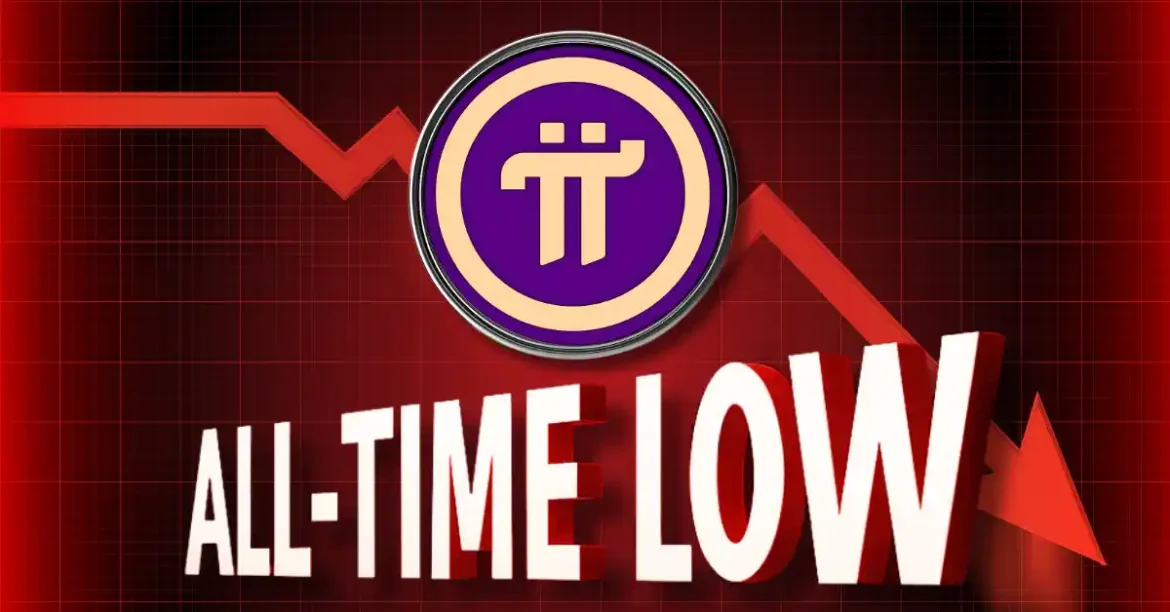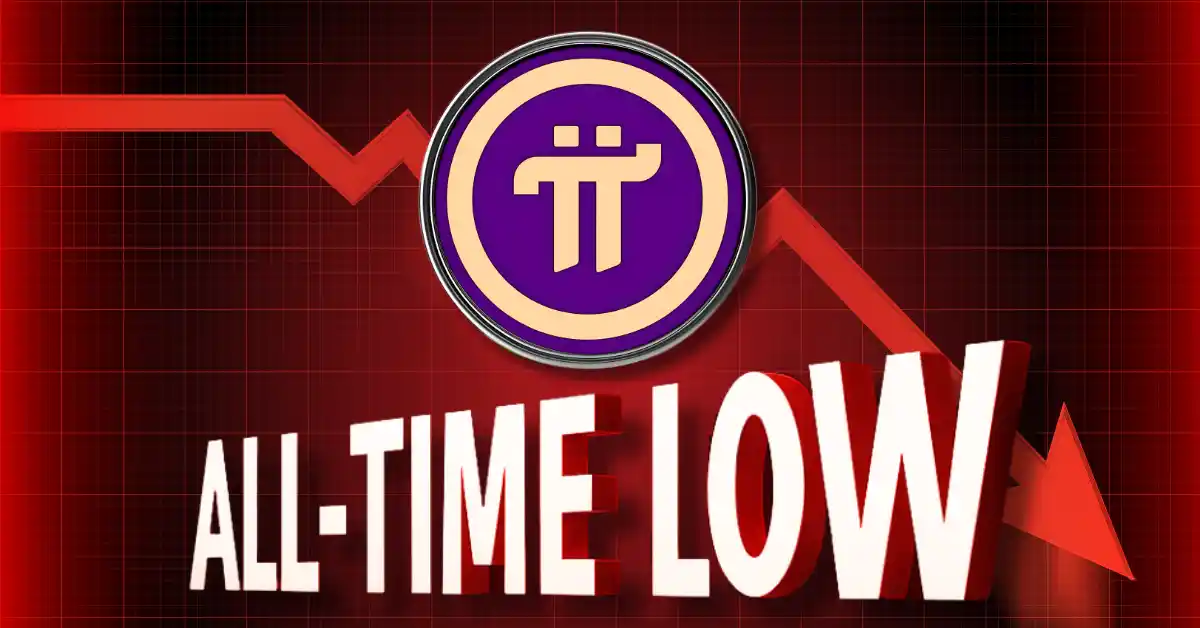Pi Network, a cryptocurrency project designed for mobile mining, has found itself at a critical juncture. While the promise of easy access to cryptocurrency has attracted a substantial user base, the actual value and future trajectory of the Pi coin (PI) remain shrouded in uncertainty. This report analyzes the current market sentiment surrounding Pi, the factors influencing its price, and the potential scenarios that could unfold in the near future, with a particular focus on whether it can overcome the $0.70 resistance level.
A Rocky Road: Price Fluctuations and Key Resistance Levels
The price of Pi has been anything but stable. Recent data paints a picture of volatility and downward pressure. After a brief rebound, Pi has struggled to maintain its value, facing renewed selling pressure and failing to consistently stay above the $0.50 level. This inability to sustain momentum has triggered concerns of further price declines, with some analysts predicting a potential drop to as low as $0.40.
The $0.70 resistance level represents a significant hurdle for Pi. Overcoming this barrier would signal strong buying pressure and renewed investor confidence. However, several factors are currently working against such a breakout. The price fluctuations are not just a reflection of market sentiment but also a result of the underlying challenges the project faces. The inability to maintain key support levels indicates a lack of strong fundamental backing, which is crucial for any cryptocurrency to achieve sustained growth.
The Weight of Token Unlocks: A Double-Edged Sword
Scheduled token unlocks pose a considerable risk to Pi’s price stability. The release of large quantities of PI into the market, such as the 276 million tokens unlocked in July 2025, can significantly increase the circulating supply and put downward pressure on the price. This is particularly concerning given the already limited utility and adoption of Pi.
While token unlocks are intended to incentivize participation and development within the Pi ecosystem, they can also trigger panic selling among holders, especially if the project fails to deliver on its promises. The timing and manner of these unlocks are critical. If the market perceives the unlocks as a dilution of value, it could lead to a sell-off, exacerbating the downward pressure on the price. Conversely, if the unlocks are accompanied by significant ecosystem developments and increased utility, they could be seen as a positive step towards long-term growth.
The Utility Gap: Bridging the Divide Between Potential and Reality
A fundamental challenge facing Pi Network is the lack of a robust and practical ecosystem. Despite the ambitious vision of creating a decentralized marketplace and a platform for various applications, tangible progress has been slow. The absence of “real, working decentralized apps” has left many in the Pi community feeling disappointed and skeptical.
This “utility gap” is a major impediment to price appreciation. Without demonstrable use cases and real-world applications, Pi remains largely a speculative asset, vulnerable to shifts in sentiment and market trends. The announcement of a $100 million fund to support ecosystem projects is a positive step, but the actual impact will depend on the quality and adoption of the projects that emerge. The Pi Core Team must prioritize the development of a diverse and functional ecosystem to bridge this gap and provide tangible value to its users.
Listing Limitations: Breaking Down Exchange Barriers
The limited availability of Pi on major cryptocurrency exchanges is another factor hindering its growth. While Pi is listed on some smaller exchanges, it has yet to secure a listing on prominent platforms like Binance. The failure to achieve such listings, despite community efforts and expectations, has negatively impacted investor sentiment and price performance.
Exchange listings are crucial for increasing liquidity, accessibility, and overall market visibility. Without broader exchange support, Pi will continue to struggle to attract significant investment and achieve widespread adoption. The Pi Core Team must work towards securing listings on major exchanges to enhance the coin’s credibility and accessibility. This could potentially lead to increased trading volume and a more stable price.
The Core Team’s Control: A Balancing Act of Power and Responsibility
The Pi Core Team’s significant control over the Pi supply, estimated at 90%, presents both opportunities and risks. On one hand, the Core Team has the potential to stabilize the price and guide the project’s development. On the other hand, such concentrated power raises concerns about transparency, centralization, and potential manipulation.
The Core Team’s actions and decisions will be critical in shaping the future of Pi. They must demonstrate a commitment to decentralization, community engagement, and responsible management of the token supply. Failing to do so could further erode investor confidence and undermine the project’s credibility. Transparency in decision-making and a clear roadmap for decentralization will be essential in gaining the trust of the community and the broader market.
Technical Indicators: A Mixed Bag of Signals
Technical analysis of Pi’s price charts reveals a mixed bag of signals. Some patterns, such as the rounding bottom formation, suggest potential for a 50% price rally. However, other indicators, such as the Average Directional Index (ADX), Chaikin Money Flow (CMF), and Exponential Moving Average (EMA), point to mounting downside risk and weak price support.
The conflicting signals underscore the uncertainty surrounding Pi’s short-term price trajectory. Traders and investors should exercise caution and rely on a combination of technical analysis and fundamental research before making any decisions. The technical indicators highlight the need for a balanced approach, considering both the potential for growth and the risks of further declines.
The Bearish Scenario: A Drop to $0.40 and Beyond?
Several analysts have warned of a potential price decline to $0.40 or even lower. This bearish scenario is predicated on factors such as continued selling pressure, negative news flow, and a lack of positive catalysts. If Pi fails to hold above the $0.40 support level, it could trigger a cascade of sell orders and further accelerate the downward trend.
The Bullish Counterpoint: A Reversal and Rally?
Despite the challenges, there are also reasons to remain cautiously optimistic about Pi’s future. The development of a thriving ecosystem, successful exchange listings, and a shift in market sentiment could all contribute to a price reversal and a renewed rally. Some analysts predict a potential increase towards the $1.21 region.
However, for this bullish scenario to materialize, the Pi Network must overcome its current hurdles and demonstrate tangible progress in terms of utility, adoption, and decentralization. The bullish outlook is contingent on the project’s ability to deliver on its promises and build a sustainable ecosystem.
External Factors: The Unpredictable World of Crypto
Like all cryptocurrencies, Pi’s price is also influenced by external factors such as geopolitical events, regulatory changes, and overall market trends. News and policies, particularly in the United States, can have a significant impact on the entire cryptocurrency market, including Pi. Broader bearish trends could exacerbate Pi’s challenges, while positive developments could provide a much-needed boost.
Conclusion: Navigating the Uncertain Path Ahead
The future of Pi Network and the Pi coin remains uncertain. The project faces significant challenges, including limited utility, exchange listing hurdles, and concerns about centralization. While there are also reasons for optimism, such as the potential for ecosystem development and a shift in market sentiment, these factors are contingent on the Pi Core Team’s actions and the project’s ability to deliver on its promises.
Whether Pi can break the $0.70 resistance level depends on a complex interplay of factors. Overcoming this hurdle will require not only favorable market conditions but also tangible progress in building a vibrant and sustainable ecosystem. Until then, investors should approach Pi with caution, carefully weighing the risks and potential rewards. The path ahead for Pi is a tug-of-war between hope and reality, and only time will tell which force ultimately prevails.





